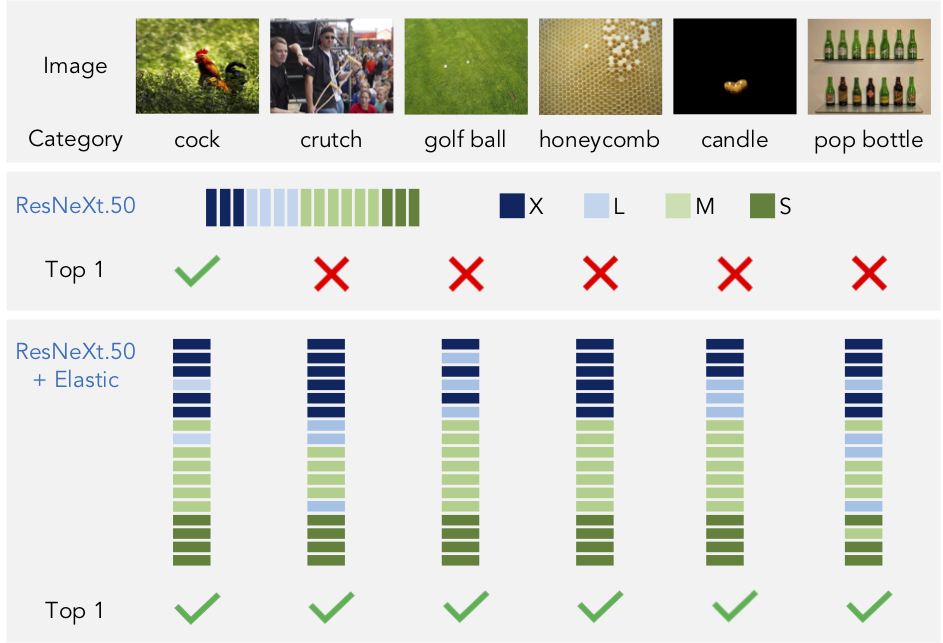Scale variation has been a challenge from traditional to modern approaches in computer vision. Most solutions to scale issues have a similar theme: a set of intuitive and manually designed policies that are generic and fixed (e.g. SIFT or feature pyramid). We argue that the scaling policy should be learned from data. In this paper, we introduce ELASTIC, a simple, efficient and yet very effective approach to learn a dynamic scale policy from data. We formulate the scaling policy as a non-linear function inside the network's structure that (a) is learned from data, (b) is instance specific, (c) does not add extra computation, and (d) can be applied on any network architecture. We applied ELASTIC to several state-of-the-art network architectures and showed consistent improvement without extra (sometimes even lower) computation on ImageNet classification, MSCOCO multi-label classification, and PASCAL VOC semantic segmentation. Our results show major improvement for images with scale challenges.

Our PyTorch implementation and pre-trained models are publicly available.